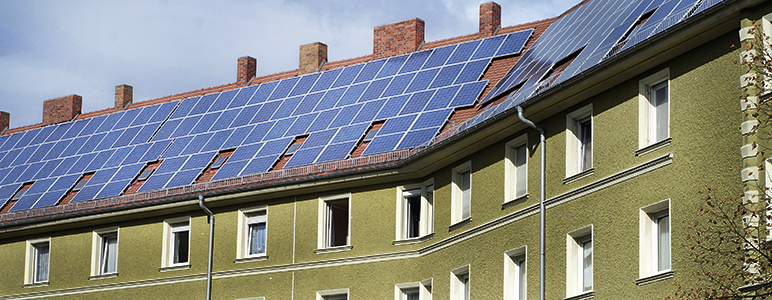


As California’s 2015 legislative session came to a close earlier this month, Governor Jerry Brown signed several bills to continue aggressive actions to significantly reduce the state’s greenhouse gas (GHG) emissions. Importantly, this list included Assembly Bill 693 (Eggman), which created the Multifamily Affordable Housing Solar Roofs Program.
AB 693 will allow low-income tenants of multifamily affordable housing projects to benefit from on-site solar installations, bringing solar power to low-income renters who are often last to realize the benefits of green technologies, while promoting local jobs, renewable energy and cleaner air for the state.
As we noted in a previous Energy Loop blog, the governor’s signature on the much more publicized Senate Bill 350 (de León) codified a 50% renewables portfolio standard (RPS) for the state’s electric utilities, as well as increased targets for energy efficiency and carbon reductions in the state’s transportation sector. Increasing the RPS to 50% will undoubtedly result in more utility-scale solar and wind projects as well as reduced GHG emissions; however, this only gets us part of the way to a truly sustainable economy powered by clean energy. This is where AB 693 comes in.
The 50% RPS is only one marker on the path to a sustainable energy future, and not even an end point. Eventually, we will need to get all of our energy needs, including the remaining 50%, from clean, GHG-neutral sources. This will include a mix of large-scale (utility) renewable generation and clean distributed energy resources (DERs) such as distributed generation (DG) solar.
Successes of California Solar Initiative
The vast majority of California’s existing DG solar installations can be attributed to the tremendous success of the California Solar Initiative (CSI) during the last eight years. This market transformation program’s elegant design stimulated tremendous growth in the DG solar market by subsidizing the upfront costs of the technology while reducing solar system costs overall.
As part of the CSI, the Multifamily Affordable Solar Housing (MASH) Program has further bought-down the first costs of solar for qualified affordable housing units, facilitating low-income families’ access to the environmental and economic benefits of the solar economy. Still, the high first costs pose a significant barrier to participation by low-income families.
Promise of AB 693
The AB 693 program continues and expands these MASH efforts to include disadvantaged communities in the clean energy revolution, and if implemented thoughtfully, could leverage deep investments in the comfort, quality and performance of the state’s large fleet of multifamily affordable housing buildings.
Without AB 693 and continued focus on issues of access, affordability and environmental justice, we risk leaving low-income families behind and still falling short of our GHG emissions reduction goals.

